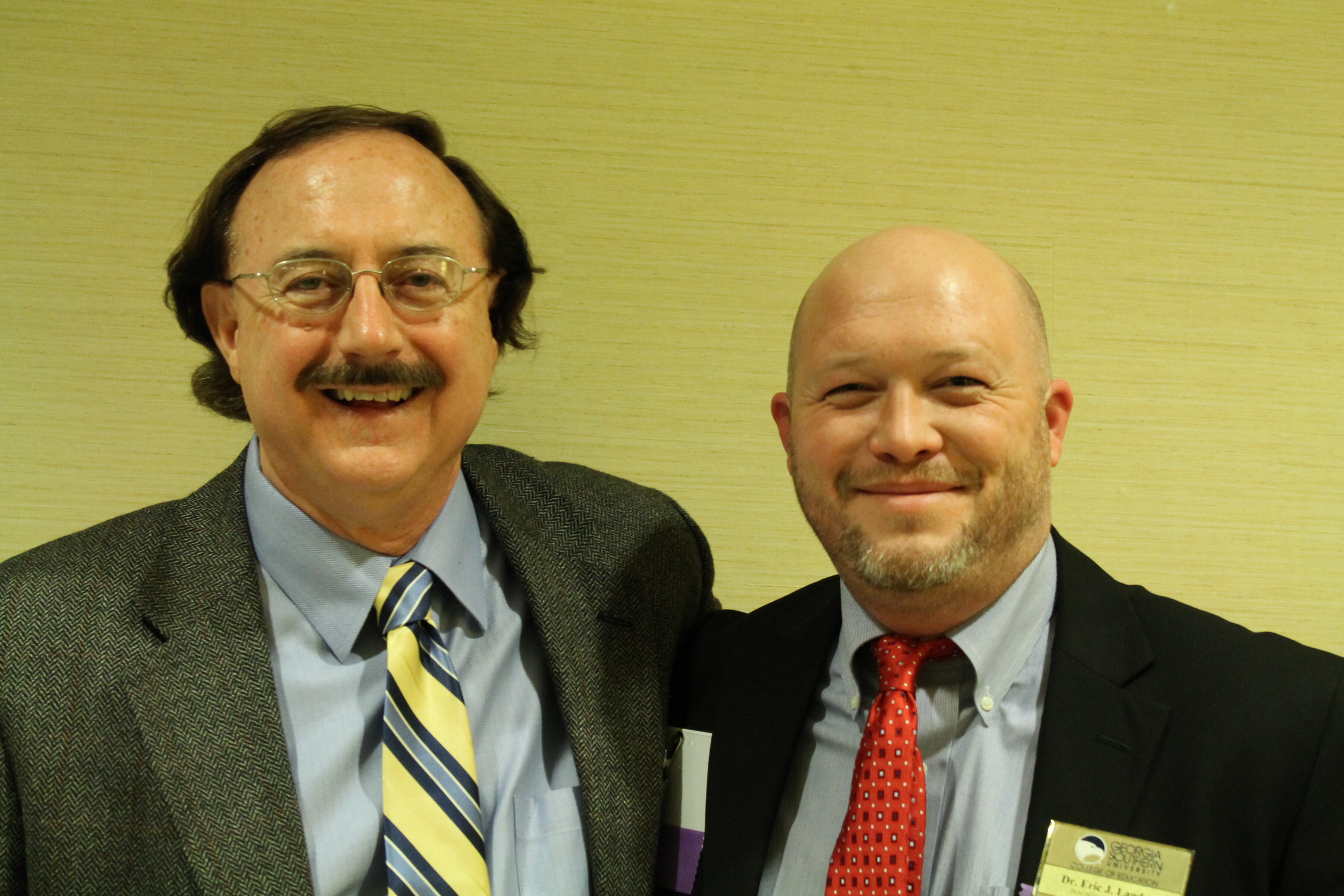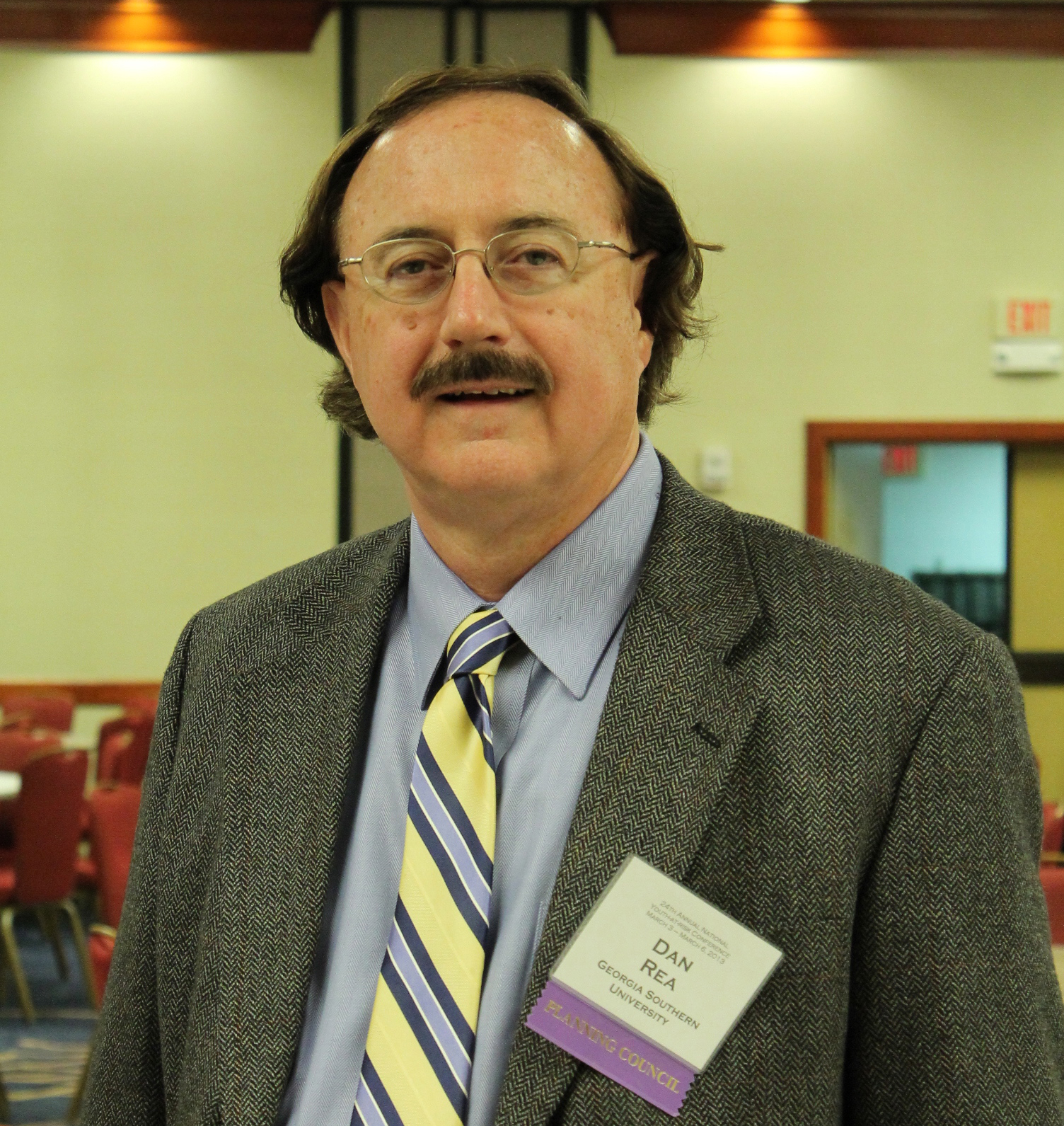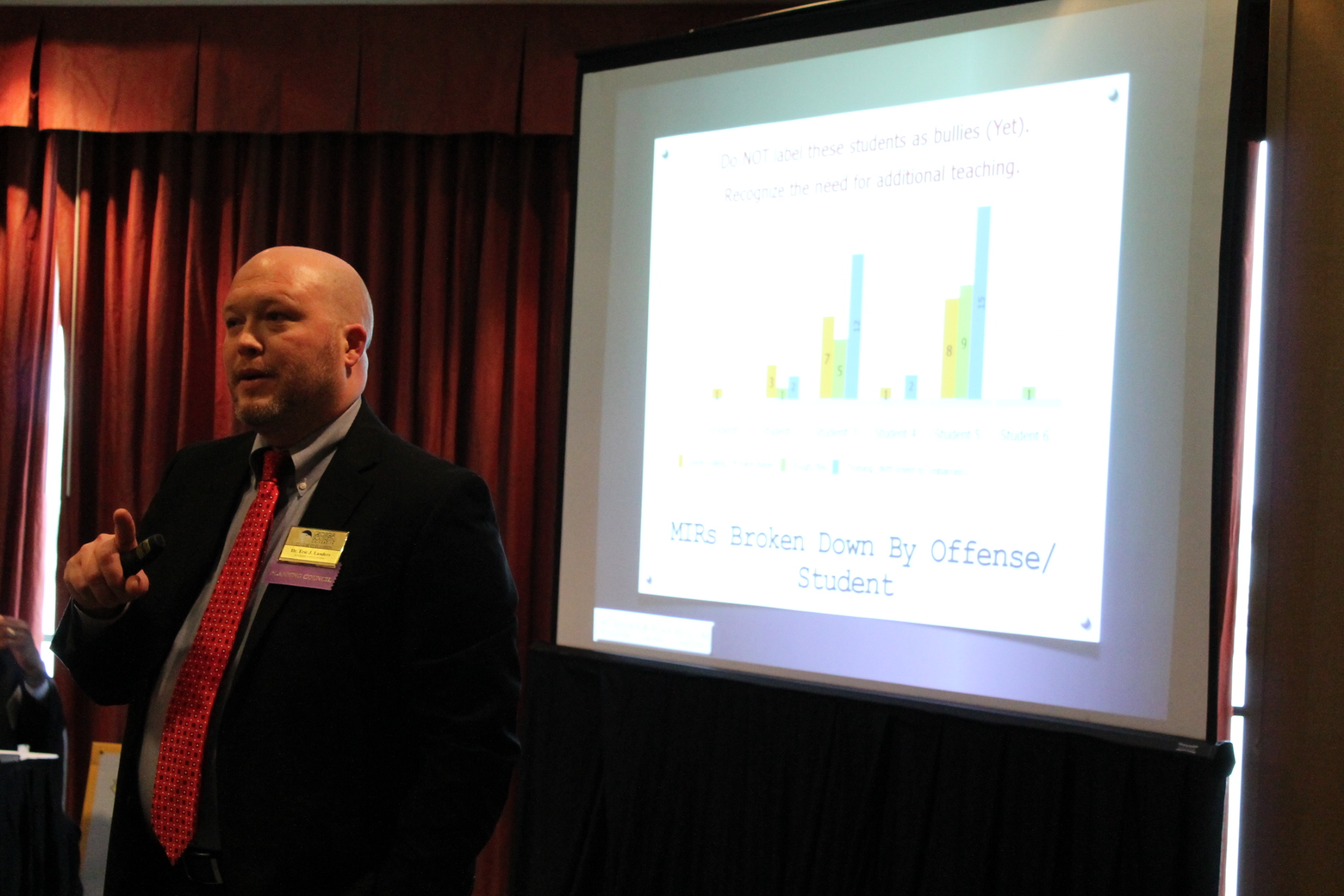
Jensen, who specializes in brain-based education, said strong teachers can help strengthen neurological connections of kids in poverty and even help improve their IQ. On the other hand, poor teachers can have the opposite effect.
Eric Landers, co-chair of the conference and an education professor at Georgia Southern University, said one take-away he got from the keynote talk was the “importance that the university plays in protecting children against ineffective teachers. We are the ones who certify them; we are the ones who put them out there. It’s our job to raise our standards.”
 Dan Rea, also a Georgia Southern University education professor who has had a role in running the conference for most of its 24 years, says the role of the teacher is not just technical or skills oriented as laid out by President George W. Bush’s No Child Left Behind or President Barack Obama’s Race to the Top. It must include having high expectations for the children with a no-excuses approach, providing a safety net when they do fail and allowing them to be active participants in the classroom and in their own lives.
Dan Rea, also a Georgia Southern University education professor who has had a role in running the conference for most of its 24 years, says the role of the teacher is not just technical or skills oriented as laid out by President George W. Bush’s No Child Left Behind or President Barack Obama’s Race to the Top. It must include having high expectations for the children with a no-excuses approach, providing a safety net when they do fail and allowing them to be active participants in the classroom and in their own lives.
The conference defines at-risk youth as almost any young person. Lori Beck, assistant principal at Hendricks Elementary School in Powder Springs, Ga. and one of the more than 1,100 conference attendees, said, “Every single child whether they are low socioeconomic or high, are at risk in some form or fashion if you have a teacher who doesn’t pay attention to who they are as a human being. Once you are working with a child, you need to look at that child and what is in the best interest of that child as a whole person.”
She adds, “You are not working with a number, you are working with a human. That’s why we do it, we love them.”
Rea said it is important that each kid have at least one caring adult in their lives, be it a teacher, counselor, a coach, a grandmother — “A person who will unconditionally care for you and love you and be concerned about your welfare. Ideally you are going to have a person who is not only caring but has high expectations.”

Rea says more kids are in poverty, which exasperates all issues, but that should not be an excuse. “All children have modifiable behaviors. Even the IQ can be changed; even the mass of the gray matter can be added to and stimulated. The brain can develop new neurons and new connections and that is what we should be concerned about.”
Landers added, if we don’t do something positive to modify children’s behaviors then we are going to allow other elements in society to develop these behaviors in our children. Rea says if we don’t provide our children a sense of belonging, a freedom to have fun and a sense of empowerment, they will find anti-social ways to meet those needs like joining gangs to gain that sense of belonging, freedom and empowerment. Or a girl might get pregnant to have a sense that people now care about her.
The conference, which ends Wednesday, is taking a holistic approach when dealing with at-risk young people. It includes sessions on helping them develop their intellectual abilities as well as their social and emotional skills. There are also sessions on violence prevention and how to provide young people with gang alternatives. Other sessions address health, including both mental and physical. Finally sessions will aim to develop a supportive home environment, which includes getting the whole community involved.
Photo by Calvin Hutcheon





























